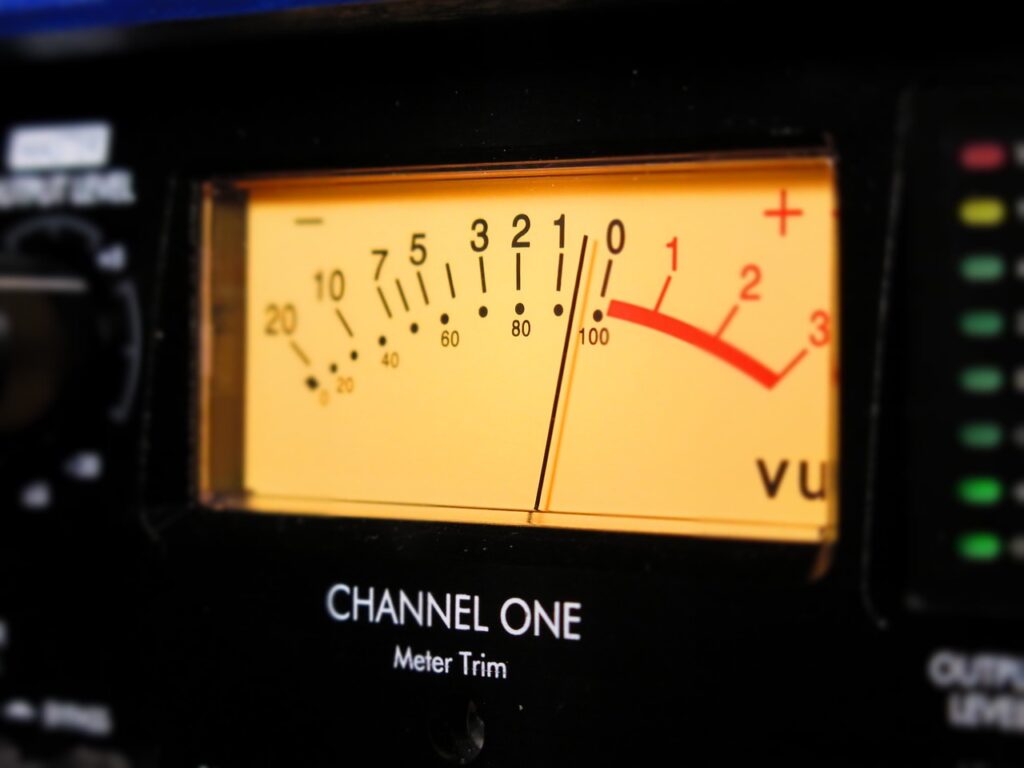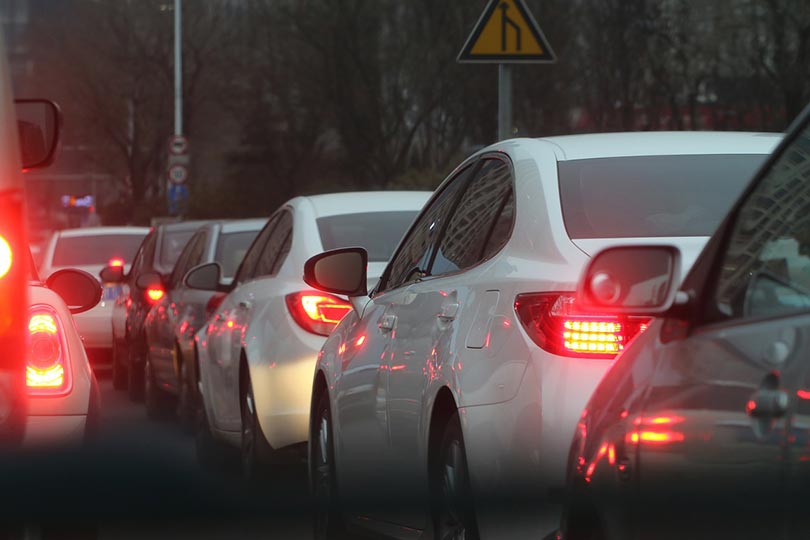How Loud Is 80 Decibels (dB)? (With Noise Comparison Chart)
-

- Last updated:

The intensity of sounds audible to the human ear is measured in decibels (dB). The decibel scale ranges from barely audible 0 dB sounds to deafening as high as 150+ decibels.
So, where does 80 dB lie on the decibel scale? How loud is this sound level?
Eighty dB is classified as a harsh sound. While it is not loud enough to cause instant or even painful hearing loss, the sound level is still harsh and 10 times louder than the recommended 70 dB maximum in 24 hours. Eighty dB is equivalent to the sound levels produced by welding equipment, a vacuum cleaner, a busy city street, or shouted conversations.
Dive in for a detailed analysis of how loud 80 dB is. We will also study how this sound level compares to other lower or higher sound levels. Most importantly, we will discuss the maximum safe exposure time to understand when 80 dB can increase the risk of causing gradual harm to your ears.
How Loud Is 80 Decibels (dB)?
Eighty-decibel sounds are intense and long-term exposure can damage your hearing. The maximum recommended sound limit for human exposure is 70 dB in 24 hours.
Even though 80 dB is a harsh sound level, minimal exposure for a few minutes is not considered dangerous. Still, it is vital to note that 80 dB is 10 times louder than 70 dB (recommended maximum). Also, most people find 80 dB sounds too loud, irritating, or annoying.
Overexposure to a sound intensity of 80 dB can cause some level of hearing loss ranging from mild to severe. Two hours is the time-weighted average (TWA) for safe exposure to 80 decibels.
According to the Occupational Safety and Health Administration (OSHA) and the National Institute for Occupational Safety and Health (NIOSH), if sound intensity hits 85 dB, it is necessary to use hearing protection. Eighty decibels is pretty close to this limit, making it imperative to limit exposure to such sound levels or wear protective earplugs.
- Alarm clock
- Telephone dial tone
- City traffic noise
- Gas-powered lawn mowers or leaf blowers
- Cruiser Motorcycle
- Screaming child
- Home appliances like older vacuum cleaners, coffee grinders, hair dryers, and dishwashers.

How Long Can I Listen to Music at 80 Decibels Volume?
The general rule of thumb is that the safe listening duration rapidly decreases as the sound level increases.
While it is perfectly okay to listen to 60 dB music for as long as you want, the recommended maximum for listening to music at 80 dB volume is 40 hours per week. If you like your music loud at 90 dB, the safe listening duration drops to only 4 hours weekly.
It remains imperative not to underestimate the effects of listening to music at a noise level of 80 dB. While exposure to that level of sound intensity for about 5 1/2 hours daily will not cause harm, continuous listening sessions must not exceed 2 hours. It is recommended to take at least one hour break in between to protect your ears from potential injury.
What Are the Effects of Overexposure to a Sound Intensity of 80 Decibels?
Eighty dB does not create enough loudness to cause instant damage to your ears. Dense city traffic or attending a rock concert will not necessarily cause any harm. While the sound volume alone is safe, you risk hearing loss depending on how long you are exposed to it.
Overexposure to 80 dB can negatively affect your hearing over time. Because the sound is intense, it affects the sensory cells in your ears that help you hear. Exposure close to the time-weighted average of two hours can cause tinnitus or temporary hearing loss.
Tinnitus is a buzzing or ringing sound in your ear that often disappears after a while. However, it can persist if you overexpose yourself to a sound intensity of 80 dB. It is necessary to seek medical attention because persistent tinnitus implies that your hearing is damaged.
If you experience muffled hearing after grinding your coffee beans for a while, this doesn’t necessarily mean you have harmed your ears. It implies that loud noise has fatigued your sensory cells and other ear structures. You will begin to hear normally once the sensory cells recover.
Overexposure to 80 decibels can ultimately cause noise-induced hearing loss. The condition is permanent and irreversible. In this case, hearing loss happens gradually, and its effects become more evident with extended exposure to harsh sound levels.

How Do I Know the Sound Level Is at 80 Decibels?
Because of the perils allied with exposure to 80 dB over long periods, it is crucial to know how to measure sound levels. Apart from using a sound level meter (SLM), you can also use SLM apps for iOS and Android phones. While some apps are available at a small fee, others, like NIOSH-SLM App and Decibel Pro, are free.
Sound-level applications combine the features of noise dosimeters and professional sound-level meters. This ensures that you know the sound intensity within a specific environment or the sound level of the music you listen to over your headphones. Also, the app will send you a notification once you have reached your maximum safe daily dose.
When you are in a noisy environment and do not have an app, there is an easy way to estimate the sound intensity. If you have to shout for someone standing at arm’s length to hear you, the sound level is 80 dB or higher.
It is necessary to protect your ears if you realize that the measure of sound around you can cause potential dangers. Experts recommend protecting yourself by wearing earplugs whenever a specific sound is too loud for your liking. No sound measuring tool or app is as accurate as your instincts.
Noise Comparison Chart
| Decibels | Sound Source |
| 0 | Silence |
| 10 | Ticking watch, normal breathing |
| 20 | Rustling leaves |
| 30 | Whispering, Silent Library |
| 40 | Light rain, quiet household room |
| 50 | Moderate rainfall, Refrigerator |
| 60 | Air conditioner, normal conversations |
| 70 | Toilet flush, shower |
| 80 | Noisy restaurants, city traffic |
| 90 | Convertible car on high-speed |
| 100 | Chainsaw, helicopter |
| 110 to 120 | Siren, passing ambulance |
| 130 to 140 | Fireworks |
| 150 to 160 | Shotgun blast, fighter jet launch |
| 170 to 180 | Rocket launch |
Final Thoughts
Generally, 80 dB is about as much noise as your ears can stand without getting damaged.
The sound intensity is strong enough to travel up to 100 feet from its source under normal weather conditions. Whenever possible, set precautions to ensure you stay within this sound level. Limiting exposure and, by extension, protecting yourself from potential hearing problems is also necessary.
Overexposure to 80 dB sound levels can compromise your ability to hear over time. Noise-induced hearing loss can happen to anyone, irrespective of their age. The trick to protecting yourself is to limit the time frame you are exposed to harsh sounds.
- Related Read: How Loud is 140 Decibels (dB)?
Featured Image Credit: Pixabay
Contents

